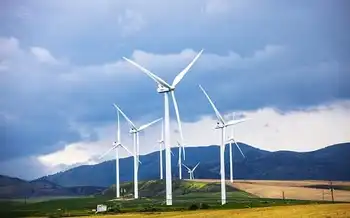U.S. freezes solar energy projects
By New York Times
Protective Relay Training - Basic
Our customized live online or in‑person group training can be delivered to your staff at your location.

- Live Online
- 12 hours Instructor-led
- Group Training Available
The Bureau of Land Management says an extensive environmental study is needed to determine how large solar plants might affect millions of acres it oversees in six Western states — Arizona, California, Colorado, Nevada, New Mexico and Utah.
But the decision to freeze new solar proposals temporarily, reached late in May, has caused widespread concern in the alternative-energy industry, as fledgling solar companies must wait to see if they can realize their hopes of harnessing power from swaths of sun-baked public land, just as the demand for viable alternative energy is accelerating.
“It doesn’t make any sense,” said Holly Gordon, vice president for legislative and regulatory affairs for Ausra, a solar thermal energy company in Palo Alto, Calif. “The Bureau of Land Management land has some of the best solar resources in the world. This could completely stunt the growth of the industry.”
Much of the 119 million surface acres of federally administered land in the West is ideal for solar energy, particularly in Arizona, Nevada and Southern California, where sunlight drenches vast, flat desert tracts.
Galvanized by the national demand for clean energy development, solar companies have filed more than 130 proposals with the Bureau of Land Management since 2005. They center on the companiesÂ’ desires to lease public land to build solar plants and then sell the energy to utilities.
According to the bureau, the applications, which cover more than one million acres, are for projects that have the potential to power more than 20 million homes.
All involve two types of solar plants, concentrating and photovoltaic. Concentrating solar plants use mirrors to direct sunlight toward a synthetic fluid, which powers a steam turbine that produces electricity. Photovoltaic plants use solar panels to convert sunlight into electric energy.
Much progress has been made in the development of both types of solar technology in the last few years. Photovoltaic solar projects grew by 48 percent in 2007 compared with 2006. Eleven concentrating solar plants are operational in the United States, and 20 are in various stages of planning or permitting, according to the Solar Energy Industries Association.
The manager of the Bureau of Land ManagementÂ’s environmental impact study, Linda Resseguie, said that many factors must be considered when deciding whether to allow solar projects on the scale being proposed, among them the impact of construction and transmission lines on native vegetation and wildlife. In California, for example, solar developers often hire environmental experts to assess the effects of construction on the desert tortoise and Mojave ground squirrel.
Water use can be a factor as well, especially in the parched areas where virtually all of the proposed plants would be built. Concentrating solar plants may require water to condense the steam used to power the turbine.
“Reclamation is another big issue,” Ms. Resseguie said. “These plants potentially have a 20- to 30-year life span. How to restore that land is a big question for us.”
Another benefit of the study will be a single set of environmental criteria to weigh future solar proposals, which will ultimately speed the application process, said the assistant Interior Department secretary for land and minerals management, C. Stephen Allred. The land agency’s manager of energy policy, Ray Brady, said the moratorium on new applications was necessary to “ensure that we are doing an adequate level of analysis of the impacts.”
In the meantime, bureau officials emphasized, they will continue processing the more than 130 applications received before May 29, measuring each oneÂ’s environmental impact.
While proponents of solar energy agree on the need for a sweeping environmental study, many believe that the freeze is unwarranted. Some, like Ms. Gordon, whose company has two pending proposals for solar plants on public land, say small solar energy businesses could suffer if they are forced to turn to more expensive private land for development.
The industry is already concerned over the fate of federal solar investment tax credits, which are set to expire at the end of the year unless Congress renews them. The moratorium, combined with an end to tax credits, would deal a double blow to an industry that, solar advocates say, has experienced significant growth without major environmental problems.
“The problem is that this is a very young industry, and the majority of us that are involved are young, struggling, hungry companies,” said Lee Wallach of Solel, a solar power company based in California that has filed numerous applications to build on public land and was considering filing more in the next two years. “This is a setback.”
At a public hearing in Golden, Colo., on Monday, one of a series by the Bureau of Land Management across the West, reaction to the moratorium was mixed.
Alex Daue, an outreach coordinator for the Wilderness Society, an environmental conservation group, praised the government for assessing the implications of large-scale solar development.
Others warned the bureau against becoming mired in its own bureaucratic processes on solar energy, while parts of the West are already humming with new oil and gas development.
Craig Cox, the executive director of the Interwest Energy Alliance, a renewable energy trade group, said he worried that the freeze would “throw a monkey wrench” into the solar energy industry at precisely the wrong time.
“I think it’s good to have a plan,” Mr. Cox said, “but I don’t think we need to stop development in its tracks.”











